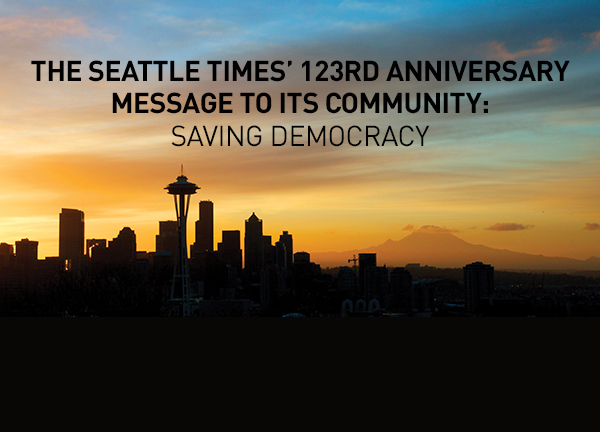Pub. Note: We get lots of interesting marcomm-related emails worth posting. Here are three to introduce this new feature.
A brand new study—which hasn’t been reported anywhere yet—explores marketing successes, failures and the characters who matter most to different generations. Here are some of the findings:
- Most Memorable: Starbucks’ green, two-tailed mermaid is America’s most recognizable product mascot with 95.6% of consumers identifying her correctly.
- Endangered: The Keebler elves aren’t aging well. There’s a huge “recognition gap”
- between older and younger Americans, with only 37.5% of Gen Z able to identify them vs. 95.2% of Baby Boomers.
- Most Hated: Mr. Mucus from Mucinex gets no love from American consumers.
- Flo vs. the Gecko: In a popularity contest, which insurance mascot comes out on top? The gecko, with a likeability score of 7.80 on a scale of 1-10. Flo’s score was only 6.98.
- Who’s sexier: Mr. Clean or the Brawny man? We’ll give you a hint; plaid is making a comeback.
- Mistaken Identity: Columbia Pictures’ “lady with a torch” mascot is among America’s most-often-mistaken mascots. More consumers linked her with rival movie studios than her own (35.8% named competitors vs. 32.4% who named Columbia Pictures).
You can find the full report here: https://crestline.com/c/brand-mascots-and-logo-designs-that-work
A recent survey by Robert Half asked local workers what their plans are when it comes to leaving their job, what would make them stay, and asked hiring managers their top concerns and what they’re doing about it. Some key findings:
- 46% of Seattle workers said they plan to look for a new job in the next 12 months.
- In addition, 78% of Seattle employers said they’re concerned with their company’s ability to retain valued employees.
- What would keep local workers from jumping ship? More money (41%), followed by more time off (22%).
Read the full report in the link above.
—Walter Lippmann
America’s Free Press System is on Life SupportOur country’s once-robust free press system is on life support. Its unnecessary demise has put our democracy at risk.
Five decades of unfettered Wall Street and hedge-fund consolidation have wiped out the critically important “localism” that is the foundation of a strong, free press system and participatory democracy. Fewer than a dozen top-50 metro newspapers remain private and with local stewardship.
Absentee investors have dangerously slashed the number of journalists and the amount and quality of content. From 2008 to 2018, newsroom employment dropped 24%, from 114,000 to 86,000. Across America, 1,800 newspapers have simply disappeared since 2004, leaving what are referred to as news deserts.
Broadcast consolidation has been just as dangerous. Thanks to corporate and hedge-fund lobbying, the FCC, which once ensured that broadcast licenses were based on public service, has been turned into the handmaiden of the financial mercenaries. The publicservice mandate no longer exists, and limits on ownership and cross-ownership rules have been eliminated.
A recent study shows that when local papers are diminished, voting goes down, the cost of government goes up, corruption increases and civic engagement decreases. Robust daily newspapers and their digital products remain the principal source of real, professionally vetted news essential for healthy communities and a functional self-government.
The Seattle Times’ Stewardship Model – 123 Years and Counting
Seattle and the Puget Sound area are an exception. The Seattle Times is a strong regional newspaper, both print and digital. We have become a national model for public-service journalism and innovation. We are the country’s oldest regional metro newspaper under continuous local stewardship. Through the years, our family has turned down lucrative buyout offers and fought off hostile suitors – all to sustain journalism, public service and private, local family stewardship. In doing so, we have emerged from the Great Recession as a new, sustainable model for the future.
The quality and volume of our journalism make us a national leader. Our audience in the Puget Sound region (1.9 million) is a record. We have a robust print audience and a fast-growing digital audience, including 43,000 digital subscriptions growing at an annual rate of 29.4%. Advertising revenue is flat (-.04%), which is far better than the industry average. We are gratified with 10.5% year-over-year growth of our “digital advertising agency” and broad array of new digital advertising and branding options.

Community Support Is EssentialThe old saying “You get what you pay for” couldn’t be more true for civically engaged citizens of the Puget Sound region. Robust print- and digital-subscription support combined with our unique national innovation – community funding of public-service journalism – has enabled us, with your help, to produce the best regional journalism in the country.
Community journalism investments now include The Greater Good Campaign to stop the defunding of higher education (2011); Education Lab (2013); Traffic Lab (2017); and Project Homeless (2018). These journalism projects have garnered large audiences and empowered significant change and improvements in public policy.
We are in the early phase of developing the Investigative Journalism Fund. This will be the most ambitious project yet with an expected launch this fall.
The Blethen family is all in but would be unable to produce this level of journalism without the community support.
The Future of our Free Press System
The Washington Post and New York Times are excellent newspapers, but they are national and can’t provide the critical local connection and civic engagement that are essential across America. Local journalism creates vibrant communities essential to support our democracy.
If we are to preserve our democracy and emerge from these divisive times, we must urgently address media consolidation and re-establish localism for all media – most importantly, print and digital newspapers.
We need a movement to protect the free press in our country and bring attention to:
|
•
|
The critical importance of independence and localism
|
|
•
|
Educating the nation on the creation of our free press, an understanding necessary to begin to identify and embrace reform
|
|
•
|
Understanding necessary to begin to identify and embrace reform
|
|
•
|
Educating the populace on the creation of our free press
|
|
•
|
Identifying the root causes of the free press system’s decline
|
|
•
|
Developing public policy solutions and creating a path to recovery
|
Blethen Family StatementFor 123 years, The Seattle Times and Blethen family have had a very beneficial symbiotic relationship with Greater Seattle and Washington state – a relationship more important today than ever. As we celebrate our 123rd anniversary and transition to a fifth generation of family stewards, we want to assure you that, with your support, we will stay the course and ensure that you continue to have an exceptional level of journalism and public service.
With deep appreciation, thank you for more than 12 decades of support.

PublisherWe want to hear from you
What Public Service project would you like to see? Have suggestions for our existing labs? Interested in funding Public Service journalism? How can we better serve your news, information and advertising needs?Email PublisherFeedback@seattletimes.com with your comments and suggestions.
|
The First American Revolution in Communications “… Innovations that made up the first American revolution in information and communications: The United States established free speech as a constitutional principle, and the Constitution itself was written and published so that ordinary citizens could read it. Instead of taxing newspapers, the government subsidized them. It created a comprehensive postal network and assured postal privacy. It introduced a periodic census, published the aggregate results, and assured individuals’ anonymity. Primarily through local efforts, it extended primary schooling earlier to more of its population, including women.” — Paul Starr, “The Creation of the Media: Political Origins of Modern Communications”
|






